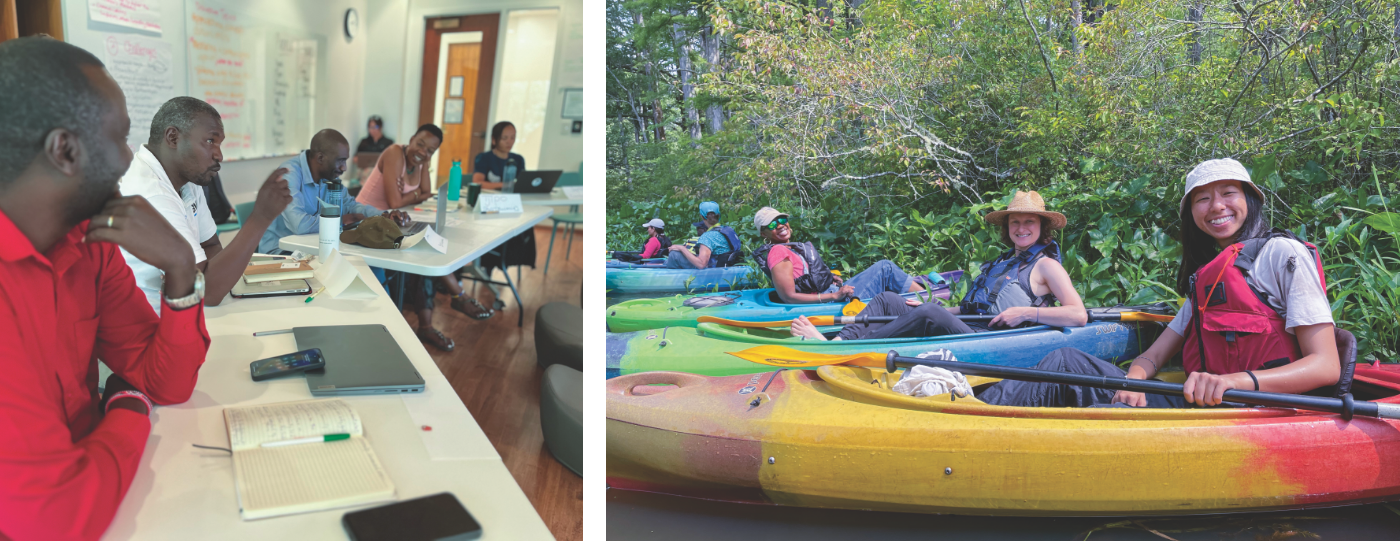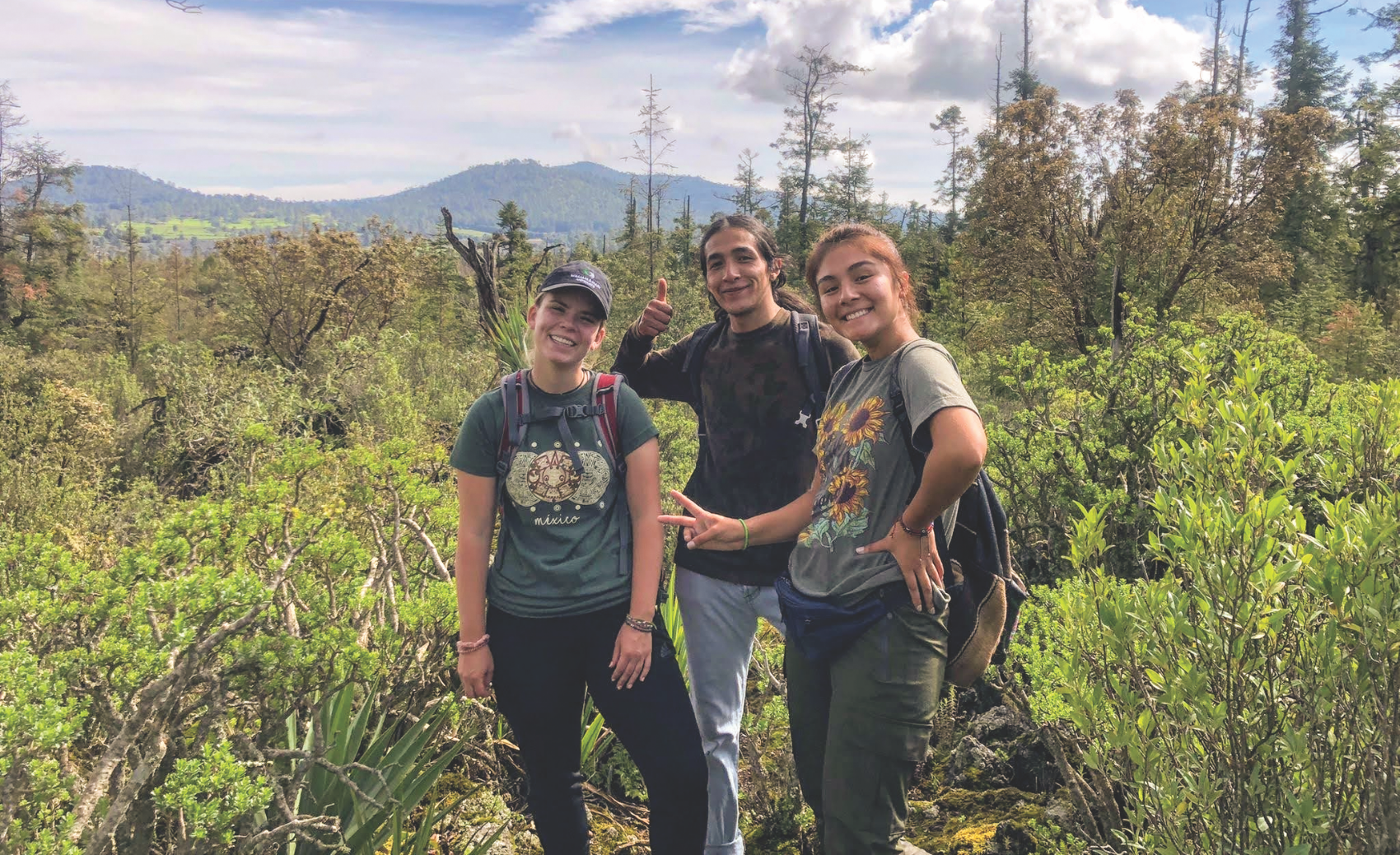FROM THE INSIDE OUT
The integrative conservation major requires students to apply diverse knowledge, complete coursework in innovation and entrepreneurship, and do applied research on a conservation issue through the Institute’s Conservation Research Program, led by IIC Research Program Manager Erica Garroutte. For new graduate Katie Clark ’23, this meant collaborating with the Virginia Department of Forestry and its partners to preserve the commonwealth’s forests.
“My experience with the IIC’s yearlong Conservation Research Project illustrated the importance of viewing conservation solutions from several angles,” she says. “In this scenario, the success of forestland conservation directly depended on the needs and abilities of private landowners, which added levels of consideration to the baseline ‘save the trees’ mentality.”
With a double major in data science and integrative conservation, Clark and her project illustrate the IIC’s unique approach: Sustainable conservation solutions cannot begin and end with ecological concerns alone. They must take into consideration human impacts — both economic and cultural, upstream and downstream. And the only way to do that is to get out “into the field.”
“Applied research is always valuable,” says fellow IIC graduate Emilio Luz-Ricca ’23, who tests machine learning models in difficult and complex new domains, such as wildlife monitoring. “Seeing the whole picture and integrating a wide variety of perspectives helps draw the research toward practice.”
He was first author on a 2022 paper published in the journal Remote Sensing in Ecology and Conservation, in which his team connected with the U.S. Fish and Wildlife Service on surveying sandhill crane populations by analyzing thermal aerial images. The IIC helped convene a broad coalition of partners that turned a purely machine-learning solution into what he calls “something truly collaborative and with an eye toward applications beyond this single survey.”
“I’m honored to have been involved with the IIC right at the beginning,” says Luz-Ricca, now a student in the applied artificial intelligence Ph.D. program at Cambridge University. “It’s such a special place — lovely people, fascinating research and a unique little space on campus,” he adds, referring to the IIC’s current home on North Boundary Street.
For Tara Vasanth ’23, her passion for conservation started with summers at the Dallas Zoo. “I became enthralled by just how diverse and colorful our planet is,” she says, “and how we have the agency to protect it.” Vasanth, cited by Institute staff as “one of the earliest and most consistent student supporters of the IIC,” served as president of its student leadership council.
“It’s serendipitous that the IIC and I began our journey at W&M around the same time — it’s made such a deep impact on the university and me,” says Vasanth, who is now studying architecture at Yale University. “I am incredibly grateful to be part of an institution that is doing such meaningful and critical work, and I know that the memories I made and the things I learned here will stay with me long after I graduate.”
The inaugural cohort of seven graduates also includes Grace Dho ’23, who connected with a Virginia Beach seafood company on oyster aquaculture; Bella Ortiz-Miller ’23, who helped develop an app to prevent bird-window collisions; Jordan Bryant ’23, who studied community-led restoration in Mexico; and Martha Ross ’23, who focused on grassland restoration on the Upper Missouri River. Many are headed to conservation work in their professional careers; others are moving on to graduate school.
“I really see the IIC becoming a research powerhouse at W&M,” says Luz-Ricca, “and it was infinitely cool having some small part in getting that started!”


